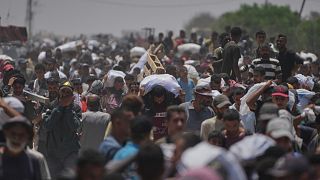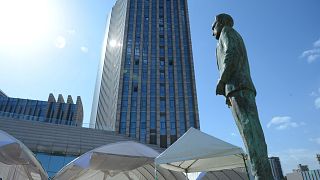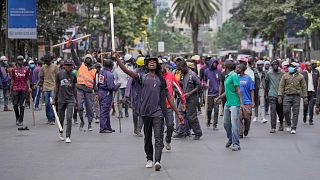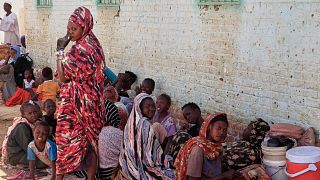Ethiopia
While the Ethiopian government started distributing emergency food aid in October after the strongest El Nino on record triggered a drought, they are asking for more aid to feed some 10.2 million people.
Men and women in Ethiopia’s northern Amhara region have been relying on the government from January to June every year for food, in exchange for digging ponds or planting trees.
The drought in the country has left some 1.3 million schoolchildren either too hungry to concentrate or drop out to search for food or water.
According to Kassaw Wale, Head of Disaster Prevention and Food Security Office, community members and elders are saying the crisis is worse than that of 1984.
“The damage is not as bad as one might expect because of the government’s as well as the public’s preparedness and the speedy response to it,” he said.
In #Ethiopia,
— USAID (USAID) March 6, 2016USAIDis providing $4M in drought-tolerant seeds to help farmers grow life-saving food during drought https://t.co/lm49cGGblE
The government was quick to acknowledge the crisis and set aside 380 million dollars of its own money into the emergency response since July.
In 1985, Ethiopia was in the grip of its worst famine, which killed around one million people.
While no one is predicting famine in the Amhara region this year, eight out of 10 Ethiopians are still dependent on rain-fed agriculture, leaving Africa’s second most populous nation in a cycle of vulnerability to drought.













01:55
US contractors say colleagues fired live ammunition at Palestinians seeking food
01:50
UN urges renewed political and climate action in Libya amid humanitarian and governance crises
02:35
Aid for hire: For-profit contractors deliver aid in war zones, alarming humanitarian groups
01:09
Wars displace over 122 million people as global aid dwindles – UNHCR
01:02
US imposes sanctions on Palestinian NGO and five charities over alleged terrorism funding
01:30
'Single storm' could push thousands of Haitians into hunger, WFP warns as hurricane season begins